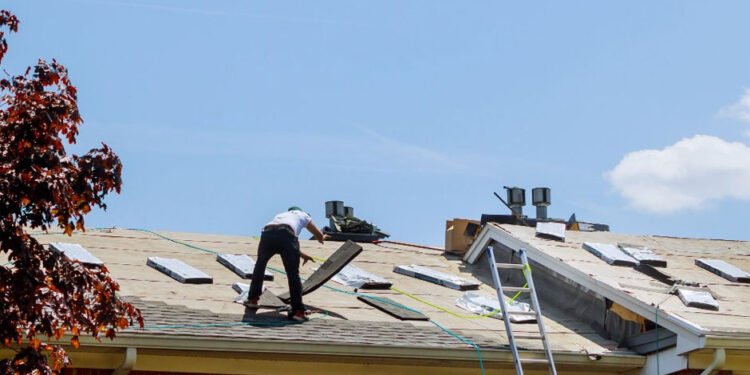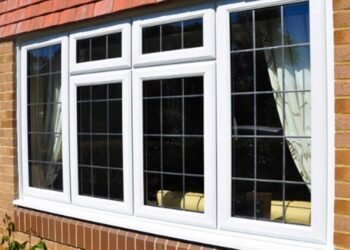In architecture and home maintenance, the significance of a robust roofing system cannot be overstated. Serving as the primary shield against the elements, a well-constructed roof safeguards the structural integrity of a building while enhancing its aesthetic appeal.
In this article, we’ll explore the critical aspects and considerations that contribute to creating strong, durable, and efficient roofing solutions. From materials and design principles to the integration of modern technology, we will uncover the key factors that form the backbone of effective roofing practices. So let’s get started!
Choosing the Right Materials
The foundation of a strong roof lies in its materials. With many options available in the market, selecting the right one for your specific needs can be overwhelming. However, by understanding the strengths and weaknesses of each material, you can make an informed decision that aligns with your budget, location, and weather conditions.
Asphalt Shingles
Asphalt shingles are the most commonly used roofing material due to their affordability, easy installation, and versatility. Made from fiberglass or organic materials coated in asphalt, these shingles come in various colors and styles. While they may not be the most durable option, they offer sufficient protection against mild weather conditions.
Metal Roofing
Metal roofing has gained popularity recently due to its longevity, durability, and energy efficiency. Made from aluminum, copper, zinc, or steel, metal roofs can withstand harsh weather conditions such as heavy rain, snow, and high winds. They are also fire-resistant and require minimal maintenance.
Clay or Concrete Tiles
Clay or concrete tiles are ideal for areas with hot and sunny climates. These materials reflect sunlight, keep the building cool, and reduce energy costs. They are also fire-resistant and can last for decades if properly maintained. However, they are heavier than other roofing options and may require additional structural support.
Wood Shingles or Shakes
Wood shingles or shakes offer a natural and rustic look to a home while providing sufficient insulation. Made from cedar, redwood, or pine, these materials are eco-friendly and can last up to 30 years with proper maintenance. However, they may not be suitable for wet or humid climates as they are prone to mold and rot.
Design Principles for Strong Roofing Solutions
Apart from the materials used, the design of a roof also plays a crucial role in its strength and longevity. Here are some design principles to keep in mind when constructing or renovating a roof:
Slope
The slope, also known as the pitch of a roof, is an essential factor that determines the efficiency of water drainage. A steep slope allows quick runoff, preventing water from pooling on the roof and causing damage. The ideal slope for a roof is 1:12 or greater.
Support
The support structure of a roof, typically made from beams and trusses, must be strong and properly installed to withstand the weight of the roofing materials and any additional snow or wind load. It’s essential to consult a structural engineer to ensure the support can handle the intended roofing materials.
Ventilation
The slope, also known as the pitch of a roof, is an essential factor that determines the efficiency of water drainage. A steep slope allows quick runoff, preventing water from pooling on the roof and causing damage. The ideal slope for a roof is 1:12 or greater.
Insulation
Proper insulation keeps the building warm in winter and cool in summer and prevents moisture buildup and mold growth. Ensuring that the roofing materials are installed correctly, leaving no gaps for air or water to seep through, is crucial.
Embracing Technology
With advancements in technology, various tools and techniques are now available to enhance the strength and durability of roofing solutions. Some examples include:
Drones for Inspection
Drones equipped with high-resolution cameras can inspect roofs without ladders or scaffolding. This makes the process safer and allows for a more thorough and accurate evaluation of the roof’s condition.
Solar Panels
Solar panels not only reduce energy costs but can also act as an additional layer of protection for a roof. They can withstand harsh weather conditions and offer added insulation, making them valuable to any roofing system.
Reflective Coatings
Reflective coatings can be applied to roofs to reduce the absorption of heat and UV rays, extending the lifespan of the roofing materials. They also help keep the building cooler, reducing the need for air conditioning.
Additional Factors to Consider
Aside from materials, design, and technology, there are a few other factors that can contribute to the strength and longevity of a roof. These include:
- Professional Installation: It’s crucial to hire a reputable roofing contractor with experience installing the specific material and design chosen for your roof. Get started by talking to professionals in your area.
- Regular Maintenance: Routine inspections and maintenance can catch any issues early on and prevent them from turning into costly repairs.
- Location and Climate: The location of a building and the climate it is exposed to can also impact the strength and durability of a roof. It’s important to choose materials and designs suitable for the specific environment.
Conclusion
In summary, the strength and durability of a roof depend on various factors, including materials, design, technology, installation, maintenance, and location. By carefully considering these factors and making informed decisions, you can ensure your roof lasts for years.
Remember to consult roofing professionals for guidance and assistance in selecting the right materials and designs for your needs. So, choose your roofing solution wisely and enjoy a strong, durable, long-lasting roof over your head.












